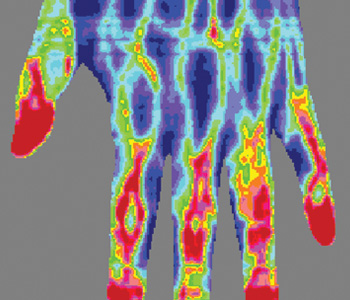Feature
CMOS Sensors for Imaging Blood Flow
Laser Doppler flowmetry is useful for monitoring blood flow, but the slow scanning speed can introduce motion artifacts and make detection of rapid changes impossible. Instruments that incorporate CMOS technology may enable real-time imaging of microcirculation.

Doctors often use laser Doppler flowmetry to measure microcirculation—the flow of blood through small vessels in organs to the surrounding tissue. The technique is used to assess burns and wounds, diabetes, inflammatory responses and other conditions that affect blood flow. It works via scattering: When laser light irradiates tissue, it is scattered along many random paths; the light scattered by moving red blood cells is frequency-shifted by an amount proportional to the velocity of the cells. This Doppler-shifted light interferes with light that has not interacted with moving cells to produce beat frequencies that are proportional to the velocity of the cells (typically in the frequency range from a few Hz up to 20 kHz).
…Log in or become a member to view the full text of this article.
This article may be available for purchase via the search at Optica Publishing Group.
Optica Members get the full text of Optics & Photonics News, plus a variety of other member benefits.
